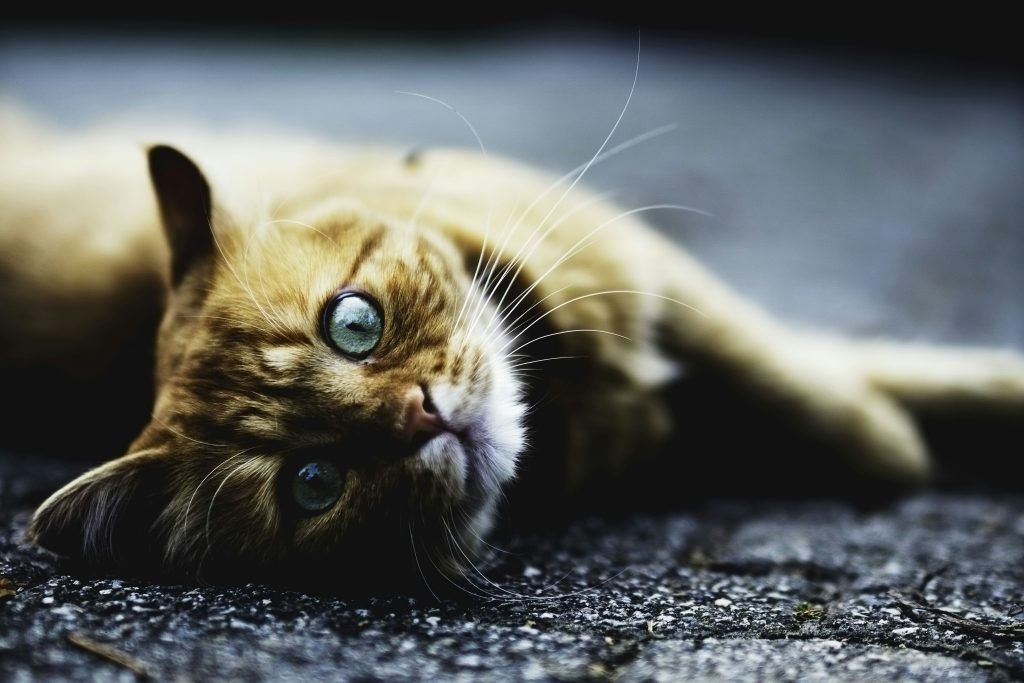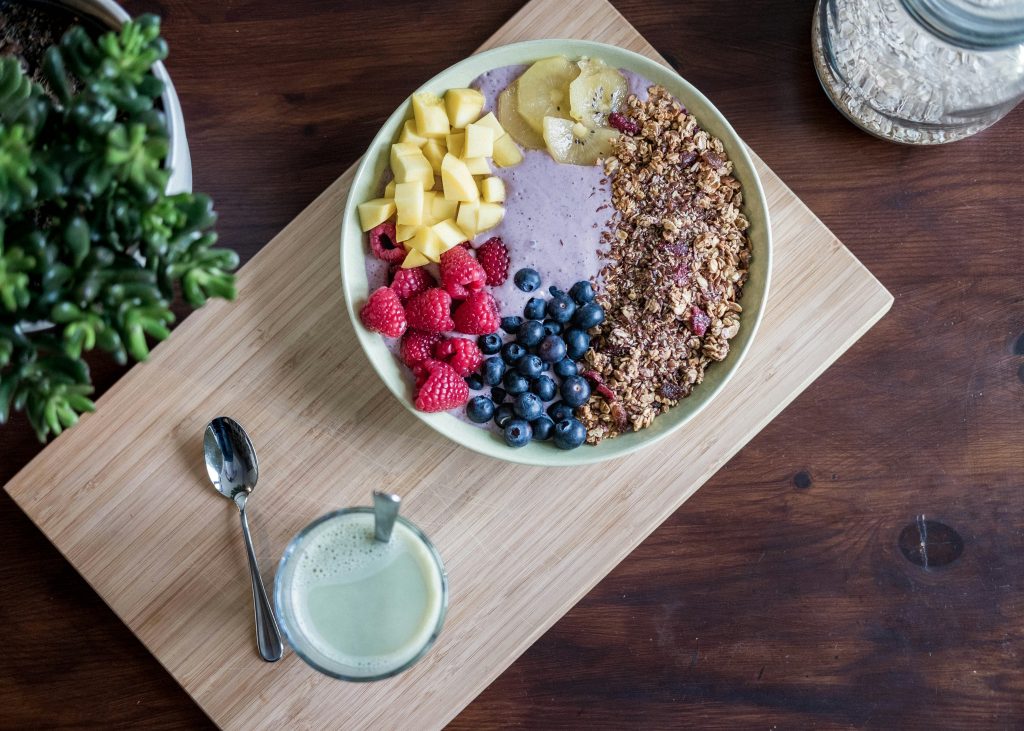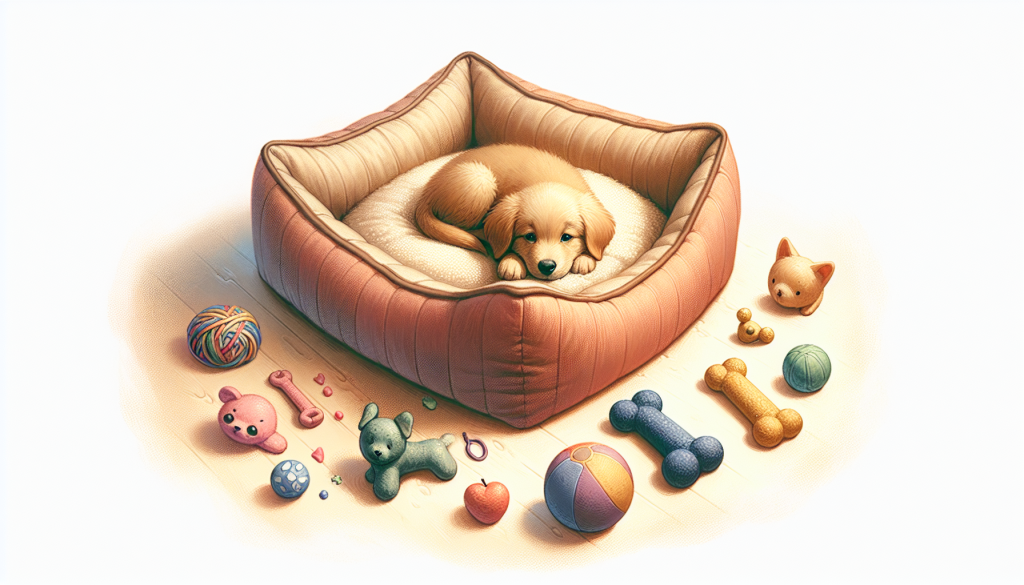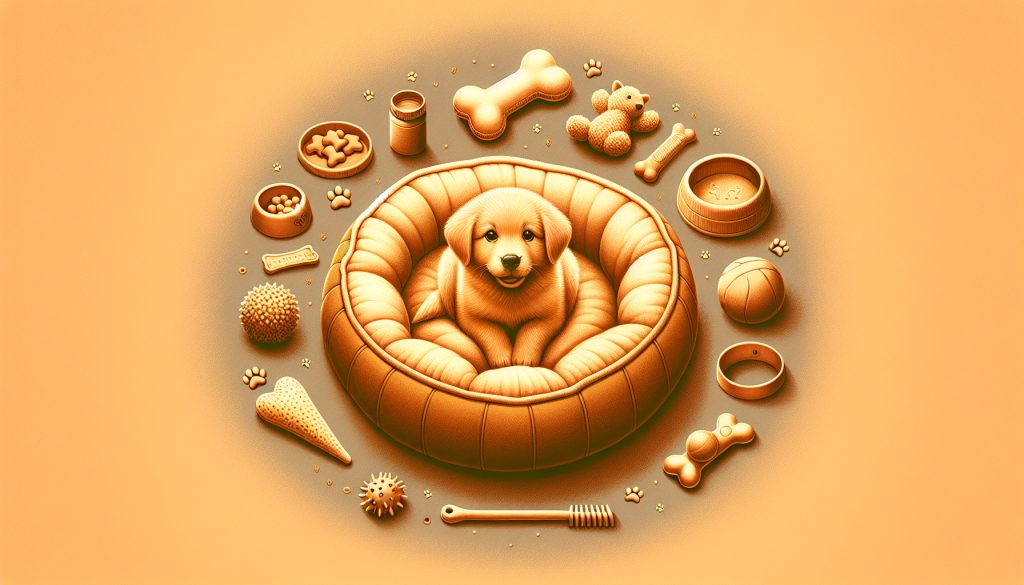Are you worried about your new puppy experiencing separation anxiety? It’s a common concern among dog owners, but fear not! In this article, we will explore effective strategies to help prevent separation anxiety in puppies. By following these tips and implementing them into your daily routine, you can ensure a smooth transition for your furry friend and create a strong foundation of independence and confidence. Let’s dive right in and set your puppy up for a lifetime of happiness and contentment!

This image is property of images.unsplash.com.
Understanding Separation Anxiety
Recognizing the signs of separation anxiety
Separation anxiety in puppies can present itself through various signs and behaviors. It’s important to recognize these signs early on to effectively address the issue. Some common signs of separation anxiety include excessive barking or howling when left alone, destructive behavior such as chewing furniture or digging, attempting to escape or excessively scratching doors or windows, urinating or defecating indoors despite being house-trained, and showing extreme distress or panic when you prepare to leave or return home. By being aware of these signs, you can take the necessary steps to help your puppy overcome separation anxiety.
Understanding the causes of separation anxiety
Separation anxiety in puppies can have various underlying causes. These causes may include a lack of socialization, a sudden change in routine, past traumatic experiences, genetics, or being overly dependent on their owners. Understanding the root cause of your puppy’s separation anxiety can help in implementing the most effective strategies to alleviate their distress. Remember, each puppy is unique, and it’s essential to tailor your approach to their specific needs and circumstances.
Promoting Independence
Gradually increasing alone time
One of the most effective ways to prevent separation anxiety in puppies is by gradually increasing the amount of time they spend alone. Start by leaving your puppy alone for short periods and slowly increase the duration as they become more comfortable. This process helps them develop confidence and reassures them that you will always return. Utilize positive reinforcement by praising and rewarding your puppy for calm behavior during these alone times.
Encouraging self-soothing behaviors
Teaching your puppy to self-soothe can significantly decrease separation anxiety. Encourage them to relax and entertain themselves with their toys or puzzles when you’re not around. Provide them with safe and stimulating activities that will keep them occupied and mentally engaged. This encourages independence and helps alleviate anxiety when you’re away.
Using crate training effectively
Crate training can be a valuable tool in preventing separation anxiety. When done correctly, a crate can provide puppies with a safe and secure space, mimicking a den-like environment. Gradually introduce your puppy to the crate, making it a positive and comfortable place for them. Associate the crate with positive experiences such as treats and toys, and gradually increase the duration they spend inside. This will help your puppy feel more secure and reduce anxiety when left alone.
Establishing a Routine
Creating a consistent schedule
Establishing a consistent schedule is crucial in preventing separation anxiety. Dogs thrive on routine, knowing when they can expect meal times, walks, playtime, and alone time. Consistency provides a sense of stability and security for puppies. Plan your daily activities in a way that ensures your puppy receives regular exercise, mental stimulation, and social interaction. Stick to the schedule as closely as possible, as unexpected changes can trigger anxiety in puppies.
Ensuring regular exercise
Regular exercise is essential for a puppy’s overall well-being and can greatly contribute to preventing separation anxiety. Make sure your puppy receives adequate physical exercise through daily walks, playtime, or interactive games. A tired puppy is more likely to be calm and content when left alone. Engage in activities that suit your puppy’s energy level and breed characteristics, ensuring a healthy balance between physical and mental stimulation.
Implementing mental stimulation
In addition to physical exercise, puppies also require mental stimulation to prevent boredom and anxiety. Incorporate activities that challenge their mind and keep them engaged, such as puzzle toys, treat-dispensing toys, or interactive games. Mental stimulation not only distracts them from anxious thoughts but also helps build their confidence and independence.
Positive Reinforcement Training
Rewarding calm behavior
Positive reinforcement is a powerful tool in training puppies and can be particularly effective in preventing separation anxiety. Reward your puppy with praise, treats, or playtime whenever they exhibit calm behavior, especially during periods of alone time. This helps them associate being alone with positive experiences, encouraging them to remain calm and relaxed.
Teaching basic obedience commands
Teaching your puppy basic obedience commands can help in preventing separation anxiety by establishing clear communication and boundaries. Commands such as “sit,” “stay,” or “down” can be particularly useful during alone time. These commands provide structure and reassurance for your puppy, promoting a sense of security and trust.
Using distraction techniques
Distraction techniques can be helpful in redirecting your puppy’s focus and alleviating separation anxiety. Before leaving, provide them with engaging toys or puzzles that will occupy their attention. Interactive toys, chew toys, or frozen treats can be effective distractions. These distractions keep your puppy entertained and provide a positive association with being alone.

This image is property of images.unsplash.com.
Desensitization and Counterconditioning
Introducing pre-departure cues
Puppies often associate pre-departure cues, such as picking up keys or putting on shoes, with being left alone. To counteract this association, introduce these cues throughout the day without actually leaving. Pick up your keys or put on your shoes but remain at home, providing positive reinforcement and rewards for calm behavior. This helps your puppy build a positive association with these cues, reducing anxiety when they occur.
Desensitizing the puppy to departures
Desensitization involves gradually exposing your puppy to departures in a controlled and positive manner. Start by simulating short departures, such as stepping outside for a few seconds, and then gradually increase the duration. Combine these departures with distracting activities or treats to create positive associations. Over time, your puppy will learn that departures do not always result in anxiety-inducing situations.
Creating positive associations
Create positive associations with your departure by leaving treats or interactive toys for your puppy to enjoy while you’re gone. By associating your absence with enjoyable experiences, your puppy will begin to view your departure more positively. This can help reduce anxiety and stress when you’re away.
Socialization and Enrichment
Providing social interactions
Socialization plays a crucial role in preventing separation anxiety. Expose your puppy to various people, animals, and environments from an early age. This helps them build confidence and adaptability, making them more resilient to separation anxiety. Organize playdates with other well-behaved dogs, allow supervised interactions with friendly people, and take your puppy to different locations to introduce them to new experiences.
Introducing new environments and experiences
Expose your puppy to new environments and experiences regularly to prevent anxiety related to unfamiliar situations. Gradually introduce them to different sounds, smells, surfaces, and stimuli. Start with less overwhelming environments and gradually progress to more challenging ones. By exposing your puppy to new experiences in a positive and controlled manner, you can help build their resilience and confidence.
Offering engaging toys and puzzles
Provide your puppy with a variety of engaging toys and puzzles to keep them mentally stimulated when you’re not around. Interactive toys, treat-dispensing toys, and puzzle games can keep your puppy entertained, helping to alleviate boredom and anxiety. Rotate the toys regularly, so they remain interesting and novel for your puppy.

This image is property of images.unsplash.com.
Seeking Professional Help
Consulting a veterinarian or dog trainer
If your puppy’s separation anxiety persists or worsens despite your efforts, it may be beneficial to seek professional help. Consult a veterinarian or a qualified dog trainer who specializes in separation anxiety. They can evaluate your puppy’s behavior, provide additional guidance, and recommend specific training techniques or strategies to address the issue.
Considering medication options
In severe cases of separation anxiety, medication prescribed by a veterinarian may be considered. Medication can help to reduce anxiety levels and provide temporary relief while implementing behavioral training and desensitization techniques. However, medication should always be used in conjunction with professional guidance and not as a sole solution.
Addressing underlying issues
Separation anxiety can sometimes be a symptom of underlying issues, such as fear or trauma. If you suspect there may be an underlying cause contributing to your puppy’s anxiety, it’s essential to address and resolve these issues. Working with a professional behaviorist or veterinarian can help identify and address any root causes, providing a more comprehensive approach to managing separation anxiety.
Preparing for Departure
Creating a calm environment
Before leaving, create a calm environment for your puppy. Remove any potential stressors or triggers that may exacerbate their anxiety. Provide a comfortable and quiet space, where your puppy can feel safe and secure. Consider playing soothing music or leaving a familiar item, such as a piece of clothing with your scent, to provide reassurance.
Implementing a departure routine
Establishing a departure routine can help your puppy feel more secure and minimize anxiety. Develop a consistent routine before leaving, such as going through a checklist of actions, giving your puppy a treat or toy, and saying a calm goodbye. The routine provides predictability for your puppy, reducing their stress and creating a sense of familiarity.
Leaving interactive toys or puzzles
To keep your puppy occupied and mentally stimulated during your absence, leave them with interactive toys or puzzles. These toys can provide entertainment and distractions, helping to alleviate anxiety. Ensure the toys are safe and appropriate for your puppy’s age, breed, and size. Consider rotating the toys regularly to maintain their novelty and interest.

Managing Absence
Avoiding long absences in the beginning
When first introducing alone time to a puppy, it’s essential to start with short periods and gradually increase the duration. Avoid long absences in the beginning, as this may overwhelm your puppy and worsen separation anxiety. Ease them into longer absences once they become more comfortable and confident in their independence.
Utilizing dog sitters or doggy daycare
If you anticipate being away for an extended period, consider utilizing the services of a dog sitter or doggy daycare. This provides your puppy with company and social interaction, reducing their anxiety during your absence. Ensure you choose reputable and trustworthy individuals or facilities that prioritize the well-being and safety of dogs.
Gradually increasing time away
To gradually build your puppy’s tolerance to longer periods of absence, practice leaving them alone for gradually increasing durations. Start with a few minutes and then extend the time slowly. Combine this with the techniques mentioned earlier, such as distractions and positive reinforcement. Gradually increasing the time away helps your puppy develop independence and reduces separation anxiety.
Avoiding Reinforcement of Anxiety
Ignoring attention-seeking behavior
Puppies sometimes exhibit attention-seeking behavior when experiencing separation anxiety. It’s important not to reinforce this behavior by giving in to their demands or providing excessive attention. Instead, ignore the attention-seeking behavior and only reward or acknowledge calm behavior. Consistency and patience are vital in redirecting your puppy’s focus away from anxiety and towards positive behavior.
Avoiding punishment or scolding during anxious moments
Punishment or scolding during anxious moments can worsen separation anxiety and damage the trust between you and your puppy. It’s crucial to remain calm and understanding, providing reassurance and positive reinforcement instead of punishment. Punishment will only increase your puppy’s fear and anxiety, creating a negative cycle.
Not rewarding anxious behavior
While it’s important to be understanding and patient, it’s equally important not to reward anxious behavior. Avoid comforting or coddling your puppy when they display signs of anxiety, as this can inadvertently reinforce their distress. Instead, wait until they exhibit calmer behavior before offering praise, treats, or attention. By rewarding calm behavior, you encourage your puppy to remain composed and relaxed.
By understanding separation anxiety and implementing these strategies, you can help your puppy overcome their anxiety and develop a healthy independence. Remember, each puppy is unique, and their progress may vary. Be patient, consistent, and seek professional help when needed. With time and effort, your puppy can learn to be comfortable and confident when alone, leading to a happier and more harmonious relationship between you and your furry companion.
